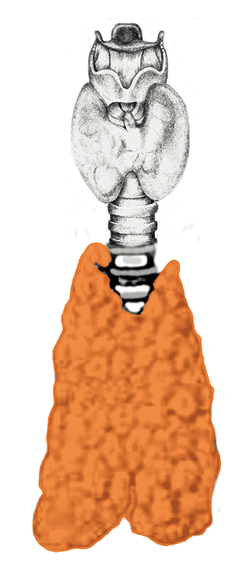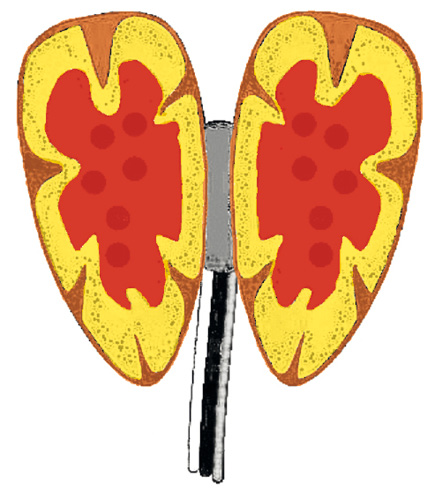In cooperation with Björn, it is splitted on "Disease is Different" into the sections by organ systems and combined with the real cases of our international testimonial / report archive of the related organ system.
LYMPHATIC SYSTEM
Unlike the circulatory system, the lymphatic system is a “one-way street.“ In the venous angle (Pirogoff‘s angle)- which is located in the groove at the center of the collarbone — the clear fluid called “lymph“ flows into the blood.
The lymph nodes are lined up on the lymphatic vessels like strings of pearls. The lymph nodes are the production site and “home” of the lymphocytes.
The lymph system can be described as the waste channeling system of the body. Its duty is to collect metabolic end products, cell waste and excess tissue fluids, which are then eliminated through the kidneys.
Lymph Nodes, Lymph Vessels
Self-esteem conflict regarding
not being able to clean some-
thing, unable to remove a burden,
unable to get rid of something
unpleasant
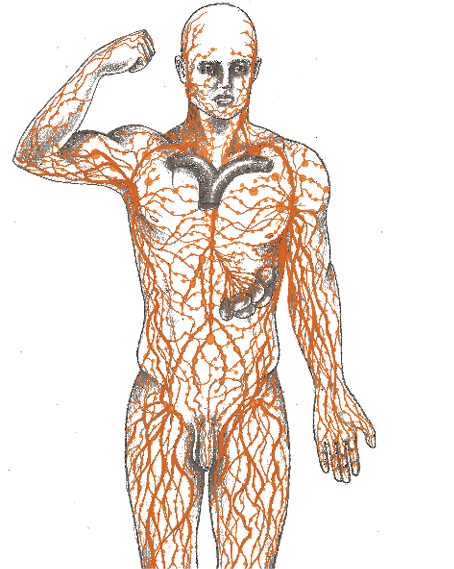
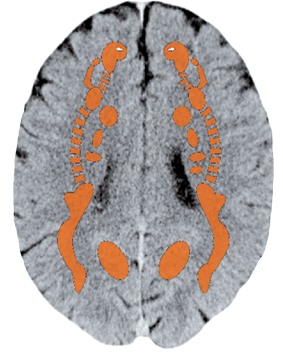
Lymph node inflammation or swelling (lymphadenopathy,
lymphadenitis, mononucleosis), the lymphatics (lymphangitis),
lymph node cancer (malignant lymphoma, Hodgkin‘s disease)
| Conflict | Self-esteem conflict, not being able to remove or purify something in the affected drainage area. Not getting rid of a mess. Dr. Hamer: “Local self-esteem-collapse conflict.” In actual sense: it‘s usually a tumor that‘s scary and one wants to get rid of. In a figurative sense: A burdensome thing one could not remove; unable to get rid of or purify something unpleasant or uncomfortable. |
|---|---|
| Example |  A woman is terrified day and night because of a tumor in her right breast > Growth of the axillary lymph nodes, so that the tumor can be removed more effectively. In CM, one now speaks of “metastases.“ (Archive B. Eybl) A woman is terrified day and night because of a tumor in her right breast > Growth of the axillary lymph nodes, so that the tumor can be removed more effectively. In CM, one now speaks of “metastases.“ (Archive B. Eybl)➜ Someone can’t get rid of the poison that is splashed over him. ➜ Unpleasant work piling up — coming in faster than going out. |
| Conflict-active | Degradation of cells (necrosis) in the lymph nodes — “holes“ like in “Swiss cheese.“ Usually goes unnoticed as there is no pain if the conflict was felt locally; only local lymph nodes are affected. If the conflict was generalized, lymph nodes throughout the body or the spleen may feel affected. |
| Repair phase | Restoration and replenishing of cells through cell division (mitosis) in the lymph nodes > the diagnosis in CM: “malignant“ = Hodgkin‘s disease. Inflammation of the lymph nodes, pain, swelling, and reddening. Increase in symptoms in the case of syndrome (see p. 277ff). After completion of the healing, the lymph nodes remain larger than before. |
| Bio. function | Strengthening and enlargement of the lymph nodes leading to higher capacity (luxury group). |
| Note | Consider “handedness“ (right or left) and side (mother-child or partner) or local conflict. Lymph nodes and white blood cells (lymphocytes) work “hand in hand,” for this reason see also p. 135. |
| Further causes | For swollen lymph nodes: repair phase “upstream.“ Any inflammation (= repair phase) is associated with increased metabolism and fluid formation in the intercellular space. The lymph nodes in the drainage area swell because plenty of fluids and waste products must be removed. No separate SBS of the lymph nodes (no division), but “high-tide” in the corresponding lymph section. For example, thick neck lymph nodes by the tonsils, throat or purulent tooth inflammation. Thickness of the inguinal lymph nodes with knee joint inflammation (see corresponding organ chapter). |
| Questions | Lymph node swelling since when? (The conflict must have been resolved shortly before this=). Where? What happened at this location? (OP, inflammation, pain, worry about a diseased organ)? Is it a substitution conflict? (Someone else is sick and one would like to remove it or there are accusations that one wants to be cleared up). In the case of children, always keep the parents/ancestors in mind. Which beliefs are at the root of it? |
| Therapy | The conflict is resolved. Support the repair phase, avoid recurrences. Elevated body positioning, rest. Lymphatic drainage, cabbage leaves poultice. Schuessler Cell Salts: No. 2, 4, and 10. Complex remedy Lymphomyosot. Teas: spiny restharrow (Ononis spinosa), elderberry, fenugreek. Spirulina algae. Garlic and lemon drink cure, colloidal silver internally and externally. Vitamin D3. MMS (see p. 68). Hildegard of Bingen: Columbine leaf special recipe. Lymphoma: Very large or aesthetically disturbing lymph nodes should be surgically removed — without chemo or radiation. |
Right
cyst
Left
cyst
Branchial Arches
Frontal-fear conflict
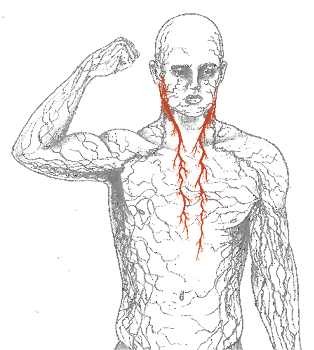
Non-Hodgkin‘s lymphoma, cysts on the side of the neck (lateral neck cysts, branchiogenic cysts)1
In CM, non-Hodgkin‘s disease is called lymph gland cancer. However, Dr. Hamer has found out that it is not the lymph nodes that are affected by this “disease.“ Rather, it is the branchial arches.
The branchial arches are an ancient building block of nature from the era of aquatic creatures.
The branchial facilities of fish and amphibians, (which are also found in human embryos), develop into the gills.
In human beings, there are six branchial arches.
These little, non-functioning pipes lie in the central compartment of the mediastinum and reach approximately from the neck to the diaphragm.
They are lined with squamous epithelium and react with pain in the active-phase, following the gullet-mucosa pattern.
Except in embryology or in the context of the cranial nerves (branchial arch nerves), CM virtually ignores these passages.
| Conflict | Frontal-fear conflict. Fear of approaching, inescapable danger coming towards us and we cannot evade it (also see p. 207) Or powerlessness conflict. One cannot stop something bad from happening. Time is running out. One doesn’t do anything (but must) and is tense for this very reason (see p. 147). |
|---|---|
| Examples | For frontal-fear conflict (for examples of powerlessness conflicts see: p.147): ➜ Fear of cancer.  A young woman does not like children. Every time she sleeps with her boyfriend, she fears she will become pregnant = frontal-fear conflict > cell degradation in the branchial arches in the active—phase, non-Hodgkin‘s lymphoma in the repair phase. (Archive B. Eybl) A young woman does not like children. Every time she sleeps with her boyfriend, she fears she will become pregnant = frontal-fear conflict > cell degradation in the branchial arches in the active—phase, non-Hodgkin‘s lymphoma in the repair phase. (Archive B. Eybl)  A 46-year-old, right-handed woman suffers from a frontal-fear conflict when her husband contracts kidney cancer. She becomes very interested in the subject and reads about the 5-year survival rates in the literature. She thinks to herself: “If he survives the five years, then he made it.“ Her husband survives the five years, and he is healthy; the patient comes into healing. Her neck swells up on both sides, she becomes weaker and weaker and has a dry cough. By means of a CT and an unsuccessful mediastinum endoscopy, a non-Hodgkin‘s lymphoma is diagnosed. Two years ago, her husband‘s cancer came back > frontal-fear conflict recurrence. They both know about the New Medicine, try everything, but his condition keeps getting worse. Existence conflict (syndrome, see p. 277ff), because of fear for the husband > the patient swells up with fluid. Two months before the death of her husband, the pressure on her neck is so strong that she goes to the hospital for an examination. Through a CT scan of the thorax, it is determined that the superior vena cava is completely closed off because of pressure from the branchial arches. At this point, her heart capacity is only 25%. (Archive B. Eybl) A 46-year-old, right-handed woman suffers from a frontal-fear conflict when her husband contracts kidney cancer. She becomes very interested in the subject and reads about the 5-year survival rates in the literature. She thinks to herself: “If he survives the five years, then he made it.“ Her husband survives the five years, and he is healthy; the patient comes into healing. Her neck swells up on both sides, she becomes weaker and weaker and has a dry cough. By means of a CT and an unsuccessful mediastinum endoscopy, a non-Hodgkin‘s lymphoma is diagnosed. Two years ago, her husband‘s cancer came back > frontal-fear conflict recurrence. They both know about the New Medicine, try everything, but his condition keeps getting worse. Existence conflict (syndrome, see p. 277ff), because of fear for the husband > the patient swells up with fluid. Two months before the death of her husband, the pressure on her neck is so strong that she goes to the hospital for an examination. Through a CT scan of the thorax, it is determined that the superior vena cava is completely closed off because of pressure from the branchial arches. At this point, her heart capacity is only 25%. (Archive B. Eybl) |
| Conflict-active | Functional limitation and later cell degradation (ulcer) in the branchial arches, simultaneous slackening of the underlying, smooth musculature (ring-shaped portions) > increased cross-section. Later, cell degradation (ulcers) in the branchial arches, slight pain in the neck. |
| Bio. function | Better flow-rate and better breathing through widening of the branchial arches (only to be understood through developmental history). |
| Repair phase | Restoration of the squamous epithelium accompanied by swelling, inflammation. Pain during the repair phase crisis. In CM, this is termed “non-Hodgkin‘s lymphoma,“ “lateral neck cysts“ or “small-cell bronchial carcinoma.“ In the repair phase crisis, possible migraines or headaches (forehead). Through a recurring—conflict, cysts develop and become relatively large, especially during syndrome (see p. 277ff). |
| Questions | Tumor diagnosed when? (Look for conflict previously). Which danger did I experience? Was there an accident? What changed in my life at the time? (Ask about problems in career, relationship, family). Which beliefs led me into this situation? What is the earliest conditioning related to this issue? (Pregnancy, birth, childhood)? What were my parents feelings in this regard? |
| Therapy | With a tumor diagnosis, determine the conflict and conditioning and resolve if active. Lymph drainage massages (see p. 68), breathing exercises. Hydrogen peroxide (H2O2) 3% strength internally. Tumors in the mediastinum area are not operable, and are treated by CM relatively unsuccessfully with chemo — not recommended. |
1 See Dr. Hamer, Charts p. 111

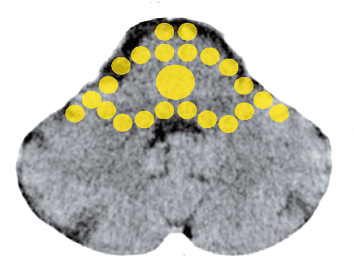
Lymphedema, cellulite on the legs, elephantiasis
| Conflict | Self-esteem conflict of feeling unaesthetic on the legs and buttocks.1 + syndrome |
|---|---|
| Examples | ➜ A woman has heavy legs and feels unattractive because of them. ➜ A child feels in the womb that the mother is dissatisfied with her legs and buttocks and that she feels abandoned > similar conflicts later in life. |
| Conflict-active | Breakdown of adipose tissue (adipose tissue necrosis). |
| Repair phase | Restoration of the adipose tissue. In nature, there is no such thing as being too fat! A fat person is beautiful and desirable, because he or she is successful in getting food. Being thin happens through neglect. In persistent repair, a new buildup of adipose tissue varies. Usually a multi-generational conflict. |
| Bio. function | Increase in adipose tissue, thickening of the fat layer, because “fat is beautiful.“ Danger of a vicious circle. |
| Note | Getting out of this SBS is very difficult, because the daily frustration of glancing in the mirror or critical inspection of the “problem zones,“ puts one into a vicious circle. Possible accompanying causes: • Desolate venal system: SBS of the veins — “ball-and-chain“ self-esteem conflict (see: p.176). When the return circulation from the legs is blocked, the lymphatic system has to step in as an “overflow system.“ The capacity limit is reached quickly. > Liquid remains in the inter-cellular space. • Overeating and/or “junk” diet, lack of exercise: In other words, constant standing or sitting, insufficient natural cold and warm stimulation, and effeminacy. Always in combination with active kidney collecting tubules. Without syndrome, no fat legs (see p.277). |
| Questions | Why do I feel that I’m not beautiful? (Demeaned by father or mother)? Did my mother think she was beautiful? My grandmother? (No > family issue that wants to be healed, e.g., through open discussions, through meditation, family constellation) What is my attitude when I eat food? (Feelings of guilt, shame)? Is it possible that I gain advantages by being overweight? (E.g., being left alone by men, not being seen as a rival, a protective shield so that no one comes too close to me)? Which role does the body play at all in relation to the meaning of life? |
| Therapy | Find refugee conflict and self-esteem conflict and solve for real — e.g., get rid of the mirrors in the house. Accept body fully. Movement, exercise, swimming and do other sports instead of sitting. Support stockings by acute discomfort. Food restrictions or change in diet. Hydrogen peroxide (H2O2) 3% strength internally and externally. MMS (see p. 68). Vitamin D3. Kneipp treatment, lymph drainage, massage. Complex remedy: Lymphomyosot. |
1 See Dr. Hamer, Charts pp. 60, 71
Swelling following acute injury or surgery
Following a sprained joint, strain, torn ligament, bruise, contusion or surgery, the affected area swells up = repair-metabolic increase. The injured structures are “put under water“ in order to optimize the supply of nutrition, remove waste and to prevent tissues from sticking together.
The swelling limits movement (like a natural cast) > immobility = biological function. Strong swelling with syndrome!
Therapy
- Elevation, ice pack, lymph drainages (see p. 68).
- Cold compresses with curd cheese or clay soured with vinegar.
- Only gentle movement or light stretching.
- Enzyme preparation.

Thymus tumor (thymoma, thymus carcinoma), thymus hyperplasia, thymus cyst
Thymus tumors are rare, so my experience with this SBS is rather limited.
Smaller thymus tumors are usually discovered by chance, because they hardly cause any symptoms.
Only large tumors may cause hoarseness, unexplained coughing, shortness of breath, difficulty swallowing, or sternum pain.
All experience reports on the organ system «Lymphatic System» from the International Report Archive:
| Author | Title and Overview | Keywords | ||||
|---|---|---|---|---|---|---|
2024/05/19   After two years abroad, the young woman returned to Germany, which was very difficult for her, as she felt absolutely powerless to return to Germany: arguments with her parents, no apartment, no partner, no job - this situation represented a conflict of powerlessness for her... | Thyroid excretory ducts, gill arch ducts | |||||
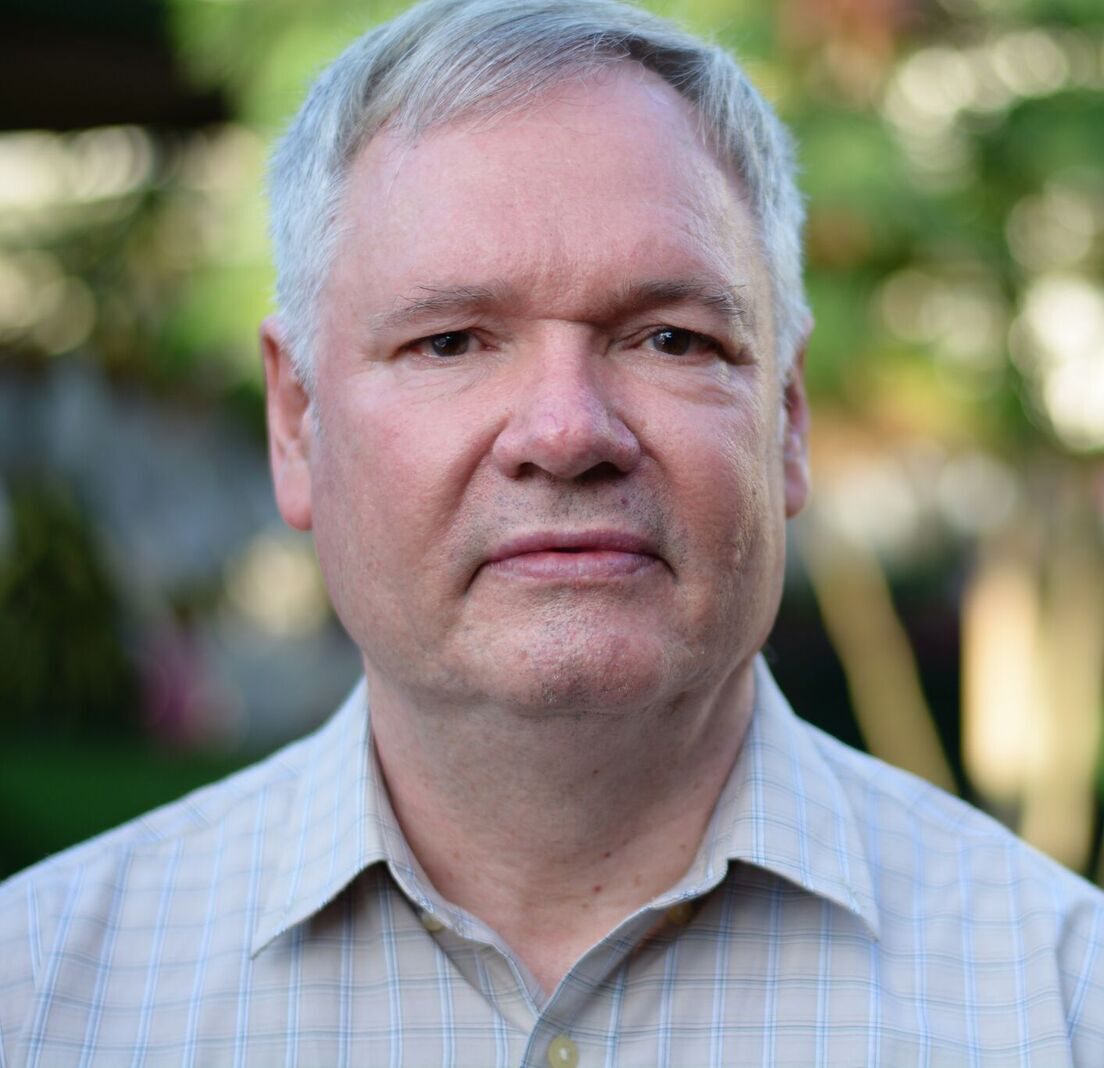 | 2021/03/12    In these report are different symptoms combined, as they nearly all were the deleterious results of 20 years of being married to a covert narcissist. After a second, very happy marriage, I developed symptoms of "breast cancer" after the sudden death of my wife. | |||||
 | 2020/03/08  Die Mutter kommt mit Jakob zu mir in die Praxis. Sie erzählt, dass ihr Sohn keine Sekunde alleine sein kann – er folgt ihr auf Schritt und Tritt. Nicht einmal ein Zimmer kann sie verlassen, ohne dass Jakob aufspringt und ihr nachgeht. | Panik, Panikattacken |

